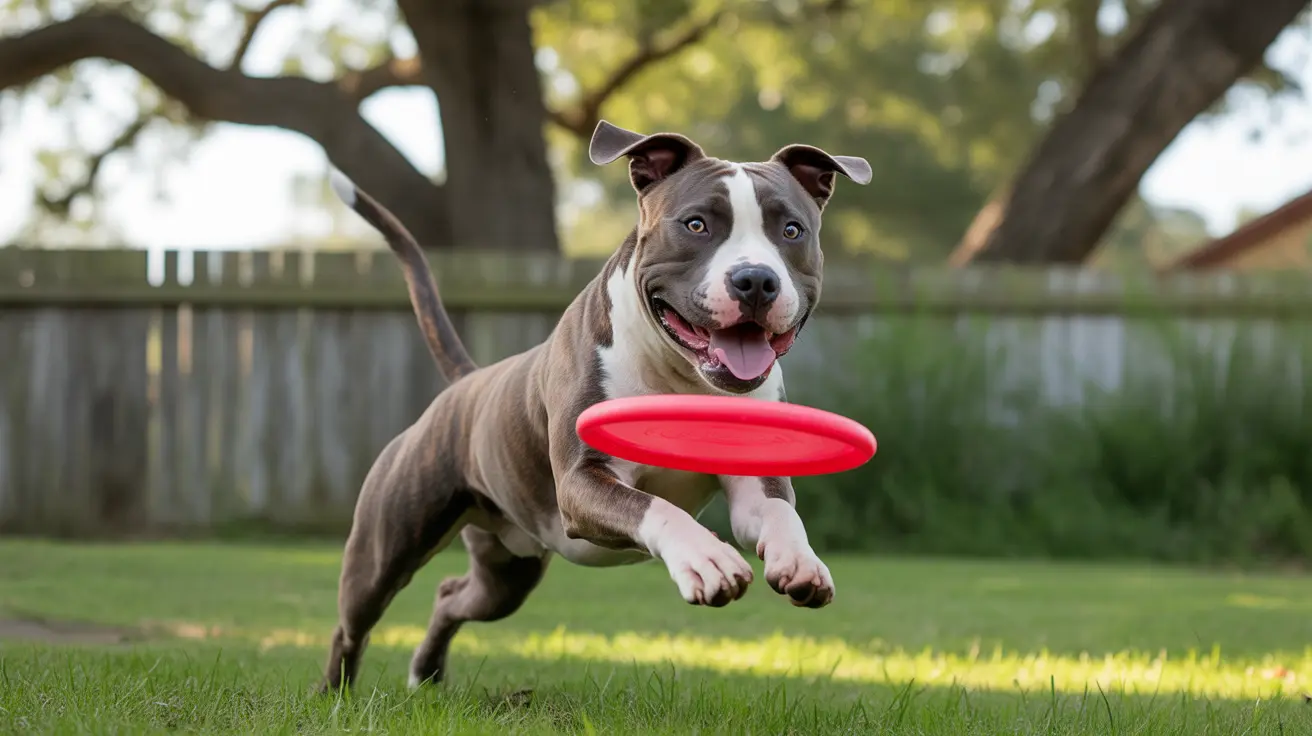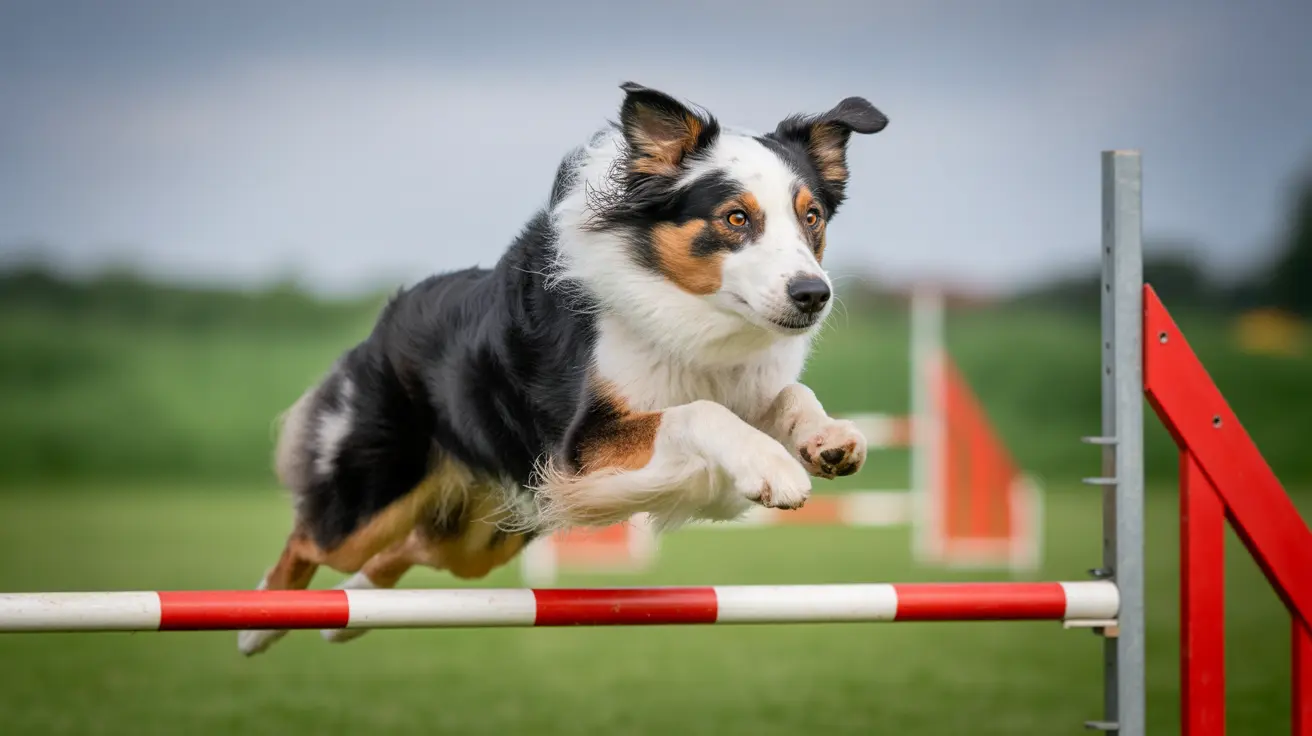The American Pit Bull Terrier (APBT) stands as one of the most misunderstood yet remarkably capable dog breeds in modern society. With their powerful build, unwavering loyalty, and intelligent nature, these dogs have transcended their controversial past to become beloved family companions for informed and dedicated owners.
Originally bred in 19th-century England as a cross between bulldogs and terriers, the APBT's journey from working dog to family pet reflects a remarkable evolution in both purpose and public perception. Today's Pit Bulls demonstrate that with proper training, socialization, and care, they can be exceptional family members, dispelling long-held myths about their temperament.
This comprehensive guide explores everything prospective and current Pit Bull owners need to know, from understanding the breed's unique characteristics to mastering essential care requirements and training techniques.
Defining the American Pit Bull Terrier
The term "Pit Bull" often creates confusion as it doesn't refer to a single breed but rather encompasses several related breeds, including the American Pit Bull Terrier, American Staffordshire Terrier, and Staffordshire Bull Terrier. The APBT specifically is recognized for its distinctive physical characteristics and temperament, though it's not currently recognized by the American Kennel Club (AKC). Proper identification is important for responsible ownership, understanding community perceptions, and complying with local regulations.
Physical Characteristics and Structure
The pit bull’s body structure exhibits a perfect blend of strength and agility, making them adept at both physical work and athletic endeavors. These medium-sized dogs typically display the following features:
- Males: 35-70 pounds, 18-21 inches at shoulder
- Females: 30-60 pounds, 17-20 inches at shoulder
- Muscular, athletic build suited for various activities
- Short, smooth coat in a variety of colors
- Broad head with strong jaw, giving an impression of power
- Deep chest and well-sprung ribs for stamina
These physical attributes contribute to their capabilities as both working dogs and loving companions. Their expressive faces and robust frames make them instantly recognizable.
Health and Wellness Considerations
Understanding common APBT health issues is crucial for maintaining their wellbeing. Regular veterinary check-ups help monitor their condition, facilitate early detection of potential problems, and provide necessary vaccinations. Owners should be vigilant and proactive in addressing health issues to ensure their Pit Bull lives a long and comfortable life.
- Hip dysplasia: A genetic joint issue that can lead to discomfort and mobility problems.
- Skin allergies and sensitivities: Often require specific diets or medicated shampoos to manage.
- Heart conditions: Early diagnosis and appropriate care are vital.
- Cataracts: These can develop with age and may impact vision.
- Thyroid problems: Hormonal imbalances may require lifelong medication.
Routine wellness checks, a stress-free environment, and timely interventions can help prevent these issues from becoming severe.
Nutrition and Diet Requirements
A proper pit bull diet forms the foundation of good health and vitality. Owners should emphasize a balanced diet rich in nutrients and monitor their dog's intake closely. Essential dietary considerations include:
- High-quality protein sources: Such as chicken, beef, lamb, or fish, to support muscle maintenance.
- Balanced fat content: Healthy fats are vital for skin, coat, and energy.
- Appropriate portion control: Prevents obesity—a common issue in many pets.
- Regular feeding schedule: Consistent meal times aid digestion and behavioral predictability.
- Fresh water availability: Hydration must be readily accessible at all times.
Consulting with a veterinarian about specific nutritional needs based on activity level, age, and health status is always recommended.
Training and Behavioral Development
Pit bull training should begin early and focus on positive reinforcement methods. Their intelligence and eagerness to please make them highly trainable when approached correctly with consistency, patience, and positive interactions. Effective training not only ensures safety but also strengthens the bond between dog and owner.
- Early socialization with people and other animals: Introducing puppies to a wide range of experiences helps prevent fear and aggression.
- Consistent command structure: Using clear cues and rewarding good behavior fosters confidence and understanding.
- Regular obedience training: Teaching basic commands such as sit, stay, and recall is essential.
- Mental stimulation exercises: Puzzle toys, scent games, and trick training keep their minds sharp.
- Clear boundary setting: Establishing household rules helps prevent problem behaviors.
Participating in group classes and ongoing training throughout life enhances sociability and reduces behavioral problems commonly associated with lack of structure.
Exercise and Activity Requirements
Meeting pit bull exercise needs is crucial for maintaining both their physical and mental health. A bored or under-exercised APBT may develop unwanted behaviors due to pent-up energy. An effective exercise routine should include:
- 45-60 minutes of vigorous exercise: Such as running, hiking, or agility training each day.
- Interactive play sessions: Tug-of-war, fetch, or frisbee offer an outlet for energy and bond building.
- Mental stimulation: Provide games and varied training activities that challenge their minds.
- Structured walks and outdoor activities: Exploring new environments adds enrichment and prevents monotony.
Customizing exercise based on age, health, and personality ensures a well-balanced and happy pet.
Grooming and Maintenance
APBT grooming requirements are relatively straightforward due to their short, low-maintenance coat. Regular care not only keeps them looking their best but also supports overall health by preventing infections and detecting issues early. Key grooming practices include:
- Weekly brushing: Removes dirt, loose hair, and distributes natural oils for a shiny coat.
- Regular nail trimming: Prevents overgrowth, discomfort, and potential injuries.
- Dental hygiene maintenance: Brushing teeth or providing dental chews reduces plaque buildup and improves oral health.
- Ear cleaning: Keeps ears free from wax, debris, and reduces risk of infection.
- Occasional baths as needed: Use dog-safe shampoo when the coat becomes dirty.
Establishing a routine early in the dog’s life helps acclimate them to care activities and reduces stress over time.
Responsible Ownership and Family Integration
Responsible pit bull ownership involves more than just meeting basic needs. Owners must be proactive in providing a stable, loving environment while advocating for their dog through education and compliance with local policies. Success factors include:
- Commitment to training and socialization: Consistent effort helps APBTs reach their full potential as trustworthy companions.
- Regular exercise routine: Keeps dogs in peak physical and mental condition.
- Proper veterinary care: Including vaccinations, routine exams, and preventive treatments.
- Understanding of local breed regulations: Some communities have specific rules regarding pit bull ownership; compliance is vital.
- Patient, consistent leadership: Guidance and structure foster trust and respectful behavior.
Integrating a pit bull into a family demands patience, communication, and a commitment to providing positive experiences. When given proper guidance and affection, APBTs thrive as affectionate and loyal family members.
Frequently Asked Questions
- What is the origin of the American Pit Bull Terrier? The breed originated in 19th-century England as a cross between bulldogs and terriers, initially bred for working purposes before becoming popular companion animals.
- Are American Pit Bull Terriers aggressive by nature? No, APBTs are not inherently aggressive; temperament largely depends on upbringing, training, and socialization. When raised in a positive environment, they are known for loyalty and friendly behavior towards humans.
- How much exercise does an APBT need? They require daily vigorous activity, typically at least 45-60 minutes, to maintain both physical health and mental stimulation.
- What are the most common health concerns for pit bulls? Common issues include hip dysplasia, skin allergies, heart disease, and thyroid problems. Regular check-ups help manage and prevent these conditions.
- Is the American Pit Bull Terrier suitable for families? Yes, with proper training, socialization, and leadership, they can make excellent, devoted family pets that bond closely with children and adults alike.
- How should an APBT be trained? Consistent positive reinforcement and early socialization are key elements of successful training, fostering confidence and good manners.
- What type of coat does a pit bull have? They have a short, smooth, and glossy coat that is easy to groom, requiring minimal maintenance to stay healthy.
- What is the average lifespan of an American Pit Bull Terrier? With appropriate care, their lifespan ranges from 12 to 16 years, allowing for many years of companionship.
- Are pit bulls easy to groom? Yes, their simple coat requires only occasional brushing and basic hygiene maintenance.
- What are common misconceptions about pit bulls? Many falsely believe they are inherently dangerous, but APBTs have proven to be loving and loyal when properly raised and handled responsibly.
- How can I be a responsible pit bull owner? Provide comprehensive training, early socialization, routine exercise, quality nutrition, and regular veterinary care. Adhering to local regulations and offering patient leadership ensures a positive experience for both dog and family.
The American Pit Bull Terrier represents a remarkable combination of strength, intelligence, and devotion. When provided with proper care, training, and love, these dogs prove themselves to be exceptional companions, challenging stereotypes through their actions as loving and loyal family members. Understanding their needs and committing to responsible ownership allows these remarkable dogs to thrive and showcase their true potential.






